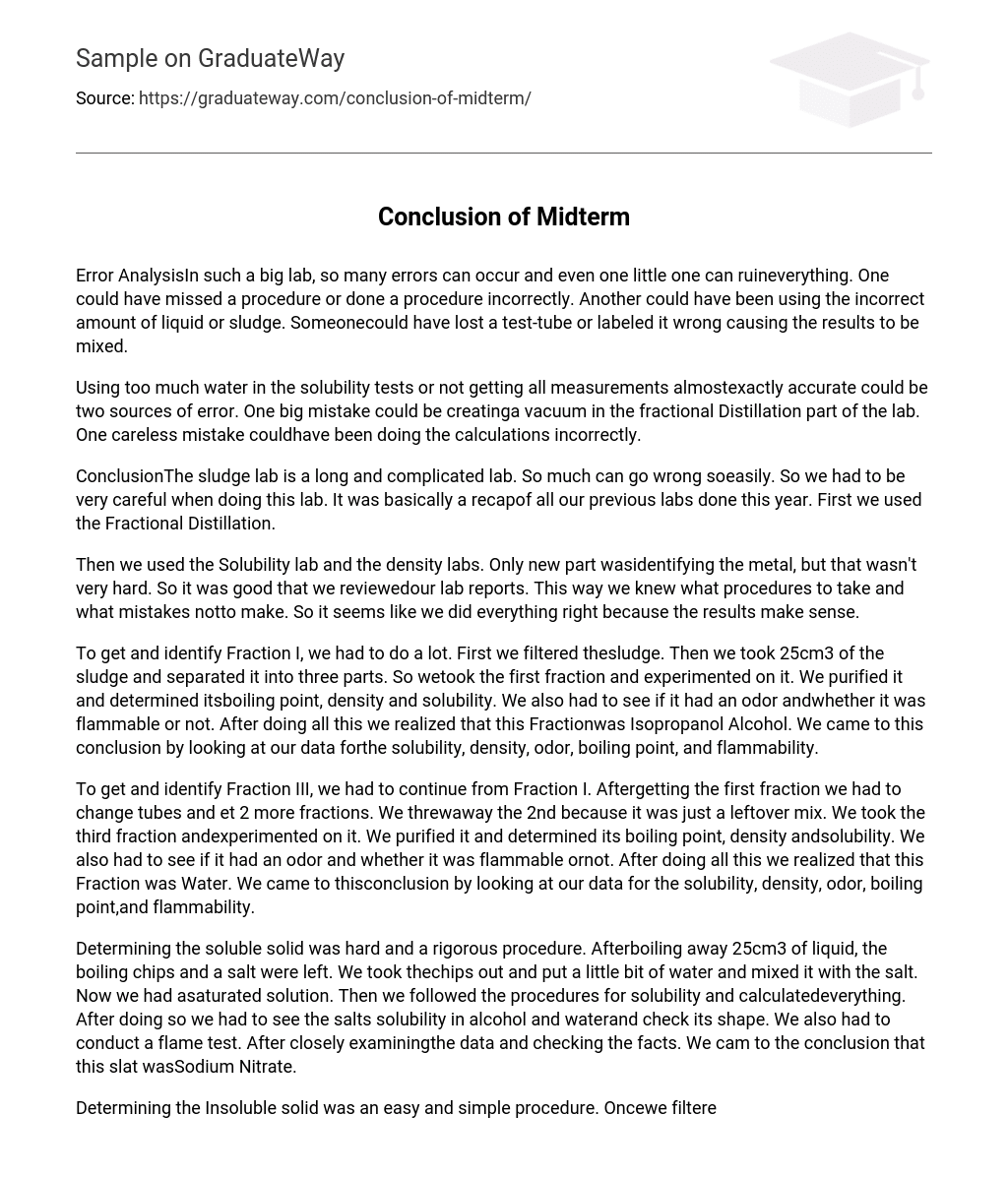Error AnalysisIn such a big lab, so many errors can occur and even one little one can ruineverything. One could have missed a procedure or done a procedure incorrectly. Another could have been using the incorrect amount of liquid or sludge. Someonecould have lost a test-tube or labeled it wrong causing the results to be mixed.
Using too much water in the solubility tests or not getting all measurements almostexactly accurate could be two sources of error. One big mistake could be creatinga vacuum in the fractional Distillation part of the lab. One careless mistake couldhave been doing the calculations incorrectly.
ConclusionThe sludge lab is a long and complicated lab. So much can go wrong soeasily. So we had to be very careful when doing this lab. It was basically a recapof all our previous labs done this year. First we used the Fractional Distillation.
Then we used the Solubility lab and the density labs. Only new part wasidentifying the metal, but that wasn’t very hard. So it was good that we reviewedour lab reports. This way we knew what procedures to take and what mistakes notto make. So it seems like we did everything right because the results make sense.
To get and identify Fraction I, we had to do a lot. First we filtered thesludge. Then we took 25cm3 of the sludge and separated it into three parts. So wetook the first fraction and experimented on it. We purified it and determined itsboiling point, density and solubility. We also had to see if it had an odor andwhether it was flammable or not. After doing all this we realized that this Fractionwas Isopropanol Alcohol. We came to this conclusion by looking at our data forthe solubility, density, odor, boiling point, and flammability.
To get and identify Fraction III, we had to continue from Fraction I. Aftergetting the first fraction we had to change tubes and et 2 more fractions. We threwaway the 2nd because it was just a leftover mix. We took the third fraction andexperimented on it. We purified it and determined its boiling point, density andsolubility. We also had to see if it had an odor and whether it was flammable ornot. After doing all this we realized that this Fraction was Water. We came to thisconclusion by looking at our data for the solubility, density, odor, boiling point,and flammability.
Determining the soluble solid was hard and a rigorous procedure. Afterboiling away 25cm3 of liquid, the boiling chips and a salt were left. We took thechips out and put a little bit of water and mixed it with the salt. Now we had asaturated solution. Then we followed the procedures for solubility and calculatedeverything. After doing so we had to see the salts solubility in alcohol and waterand check its shape. We also had to conduct a flame test. After closely examiningthe data and checking the facts. We cam to the conclusion that this slat wasSodium Nitrate.
Determining the Insoluble solid was an easy and simple procedure. Oncewe filtered out the sludge, we saw that there was a metal in it.. So we took themetal out and checked it was magnetic. We saw that it was a marble shaped,silvery whitish metal. Also had to observe what it changed the flame color to. Youcan not figure out what an object without finding its density, and so we did that. After all these tests we realized the metal was iron.





